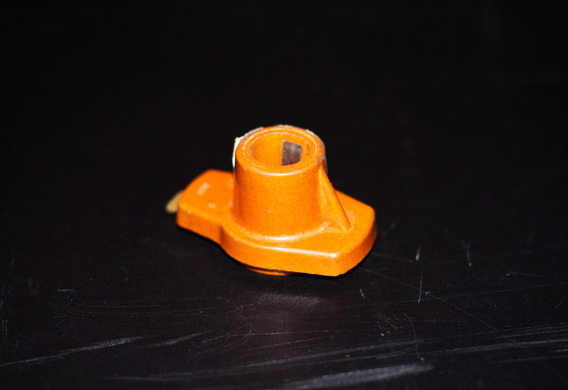
The ignition engine (runners) is a plastic part with a high voltage contact inside. When the distributor is operating, it is used to contact the rotor alternately with the pins in the lid, providing "sparks" in all cylinders in turn. Purpose of the ignition engine
Purpose of the ignition engine
The ignition (redistributors) rotor shall perform the only function of alternating high voltage coils of the high voltage coils of the coil.
The rotor is attached to the rotating shaft of the allocator. The rotation of the shaft is arranged so that one revolution of the rotor takes two revolutions of the crankshaft. This ensures that the bits are transferred to the candlelight at a strictly defined compression time.
Owners of vehicles with old carburettors take one or two spare rotors, knowing how often this failure is
The race has been rigidly fixed to the valve shaft. When the shaft of the lateral contact is rotated, the rotor is in contact with the contacts that are pressed into the casing of the allocator. The balancer lid is always in the same position. The contact of the rotor, passing by the end of the lid, alternately produces a short electric arc with each of them, passing the discharge.
In some cases, for example, Fiat's Twin Spark plug-in's car has two working contacts, one closer to the center, the other from the center. The contacts are located at different levels, as well as the response electrodes in the lid. Such a structure ensures the complete isolation of one group of contacts from another group. Twin Spark was one of the early fuel roasting systems in the combustion chamber. Despite a simple mechanical design, it was very effective and achieved substantial savings in gasoline.

Ignition rotor plus or minus rotor
The "Bolt" of the cover and the ignition engine rotor are in contact status. In modern cars, the reliability of the ignition problem is solved by the lack of a distributor and its rotor as such.
Ignition valve operation
For reliable operation of the rotor it is necessary to keep it clean and keep track of the condition of contacts. When they are either garnished or converted to a solid, the contact is frenched to a piece of paper.
While cleaning up the rotor with a sandpaper, it is necessary to proceed carefully so that the gap between the rotor and the electrodes in the lid of the balancer remains small
After cleaning, the compressed air must be cleaned to ensure that the abrasive particles do not fall under the cover of the allocator. During the operation of the raid, the rotor's contact with the rotor is wiped out by a rag soaked in gasoline, acetone or solvent. If the rotor itself, not just his contacts, has traces of charring, the allocator needs to be replaced immediately.







